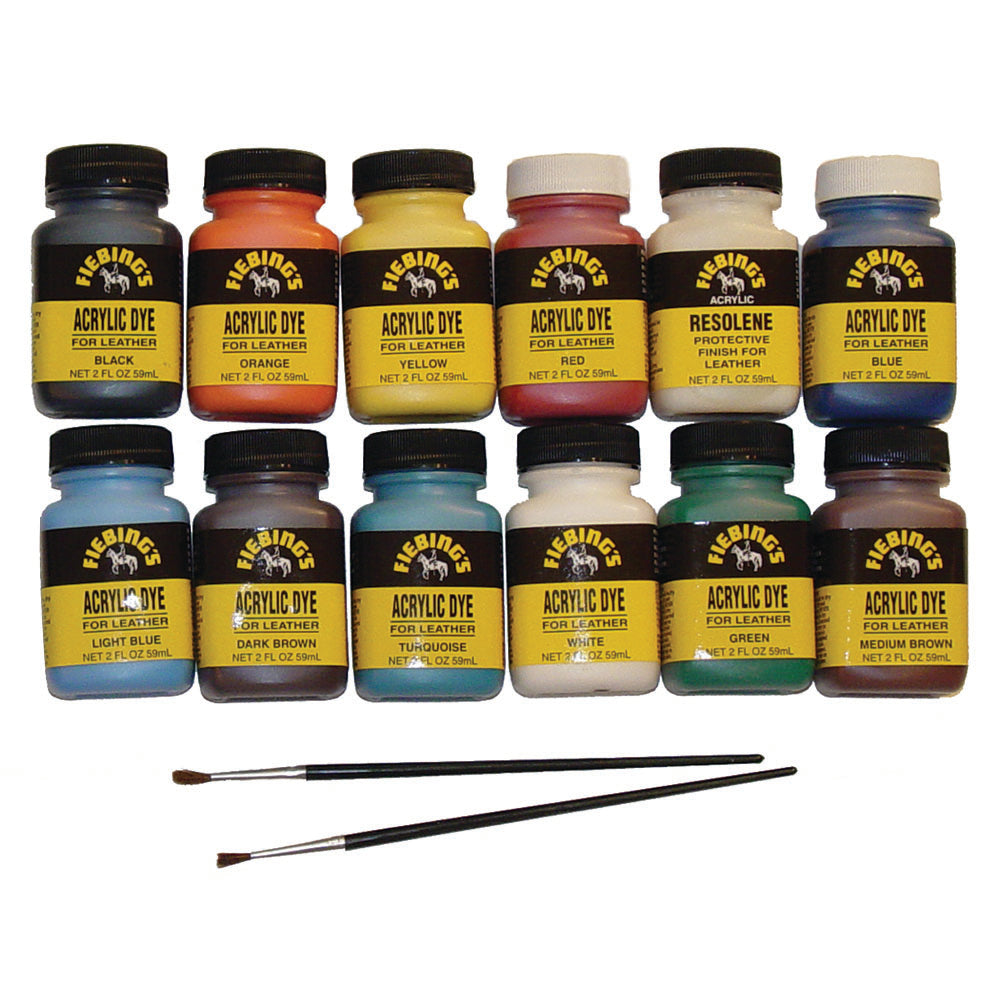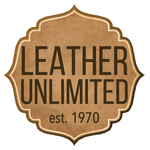
Tips & Techniques for Dyeing Leather
The easiest way to learn leather dyeing is to experiment with various dyes and leathers. Different kinds of leather have unique characteristics. Not all leathers will give the same results when dyed. It is suggested that you test colors and techniques on a scrap piece of leather. Some popular techniques for dyeing leather include block dyeing, spraying, the "cloth and finger" technique, and highlighting.
For block dyeing wrap a folded piece of cloth around a small block of wood and fasten the cloth in place with staples. Dip a wool dauber into some dye and apply to the cloth on the block. Some good effects can be achieved on embossed and plain leather goods by rubbing lightly in long strokes.
The "cloth and finger" technique works well for dyeing embossed blanks because you can apply dye to small areas. You can also wrap a piece of cotton cloth around your index finger, dip your finger into some dye, and apply it to the leather. By blotting out excess dye on another piece of cloth you can limit the amount of dye that goes on the belt and create a shading effect.
Spraying requires some equipment, like a spray gun, compressor, hoses, etc. Spraying gives good results for shading and overall even application of dye. It is suggested that you wear rubber gloves to prevent the dye from getting on your skin.
Highlighting of leather can be achieved by applying lacquer (such as Neat-Lac or Lac-Kote) to the leather before applying the dye. Carefully avoid lacquered areas when applying dye. Lacquer will resist antique finish, but not the leather dye. After dyeing the leather, a coat of antique finish will bring out the highlights.
A final protective finish for leather may include many substances like lacquer, acrylics, neatsfoot oil and waxes. Depending on what type of finish you want (glossy, semi-gloss, matte, etc), it is suggested that you test some of these finishes. Possible finishes for the edge of leather belts include edge enamel, burnishing wax and edge dye.
These basic principles of dyeing leather may be used in dyeing belts and any other leather tooled or embossed items. Experimenting with different dyes and finishes will give your project a unique custom look. Get creative and have fun!


Comments
Leave a comment